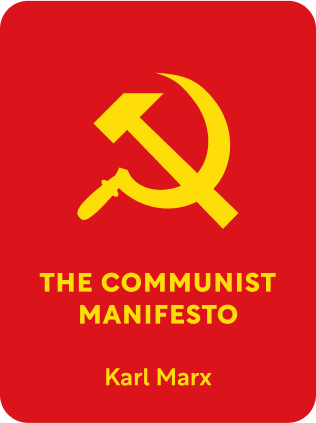

This article is an excerpt from the Shortform summary of "The Communist Manifesto" by Karl Marx. Shortform has the world's best summaries of books you should be reading.
Like this article? Sign up for a free trial here .
What is reactionary socialism? What does it mean and how is it defined in The Communist Manifesto?
Reactionary socialism is one of the types of socialism discussed in The Communist Manifesto. Reactionary socialism refers to groups of people who are not in the bourgeoisie or proletariat, but who want to improve the existing political structure.
Read more about reactionary socialism.
Reactionary Socialism
Reactionary socialism evolved as a response to the domination of the bourgeoisie class and its ruination of the other classes. There are three sub-types:
- Feudal socialism. These socialists are French and English aristocrats. They oppose the Bourgeoisie because it took away their power and support the Proletariat because it’s the only class that can attack the Bourgeoisie. Politically, however, feudal socialism opposes the Proletariat because they don’t want revolution. They’re supported by clerical socialists, who spin Christianity to a socialist angle—helping the poor, providing charity, and so on.
- Petty bourgeois socialism. The petty bourgeoisie are made up of tradespeople and small business owners who evolved from peasant proprietors and medieval burgesses. Members of the petty bourgeoisie are constantly being pushed down into the Proletariat class because they can’t compete with the Bourgeoisie. Petty bourgeois socialism criticizes the Bourgeoisie for similar reasons as the Communists but proposes different solutions. Petty bourgeois socialism strives to either completely restore old social systems or reframe the current system using the old rules.
- German/“true” socialism. At the time of writing, the Bourgeoisie class isn’t yet fully developed in Germany. German socialism is composed of generalized ideas taken from French socialist literature. Since the “true” socialists haven’t actually experienced any conflict between the Proletariat and Bourgeoisie, unlike the French, the German philosophy is more about human interests in general than class struggle.
Types of Socialism
At the time of publication, the Manifesto of the Communist Party wouldn’t have been described as socialist. In 1848, Marx defines “socialists” as non-working class members who look for help from classes other than the ones they belong to. Socialists are interested in improving social conditions and they think it’s possible to do so by improving the existing political system, rather than through the total social change the Communists call for. While socialism of the time has some things in common with Communism, such as opposing the Bourgeoisie and supporting the Proletariat, its goals are different. The manifesto discusses three kinds of socialism: reactionary, conservative/bourgeois, and critical-utopian.

———End of Preview———
Like what you just read? Read the rest of the world's best summary of Karl Marx's "The Communist Manifesto" at Shortform .
Here's what you'll find in our full The Communist Manifesto summary :
- How the oppressors and the oppressed have been in conflict for all of human history
- How the communists planned to overthrow the ruling class and put in place a fairer system for all
- Five key criticisms of Communism, and how Communists respond






